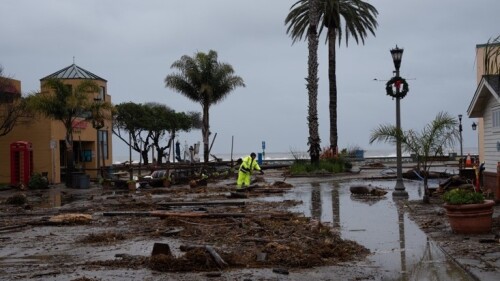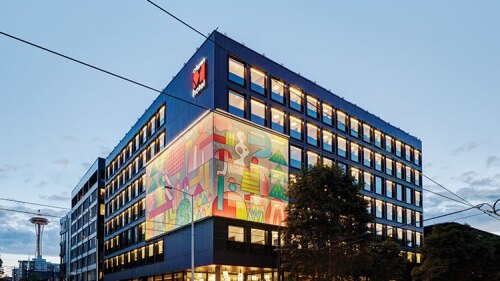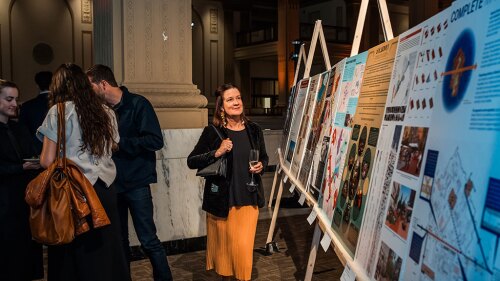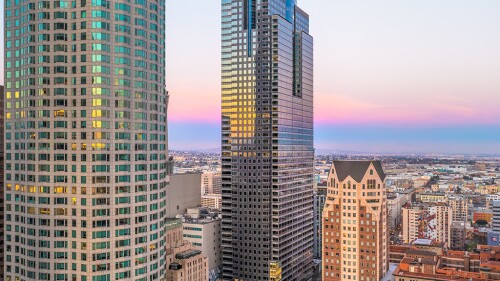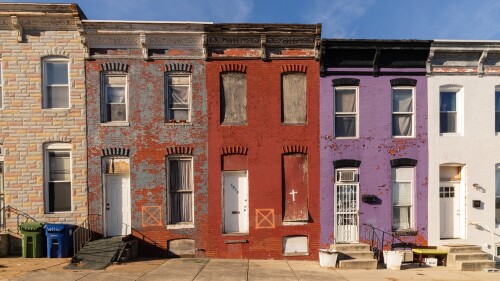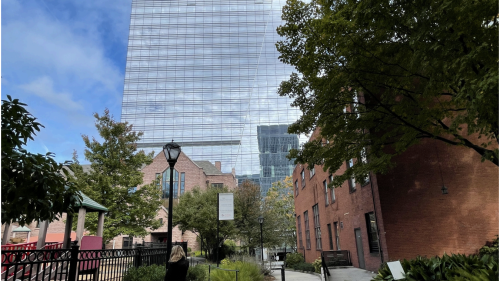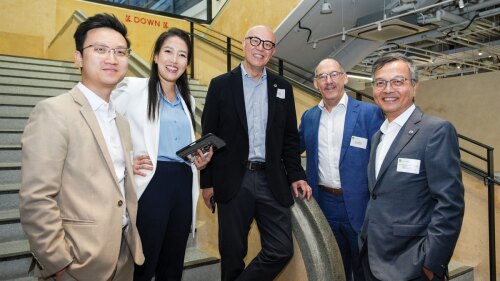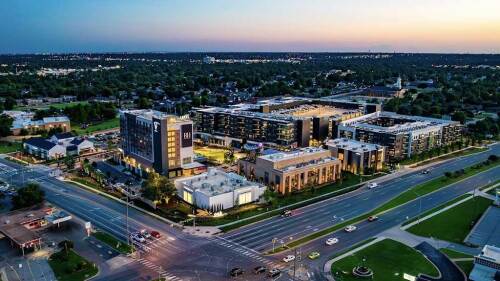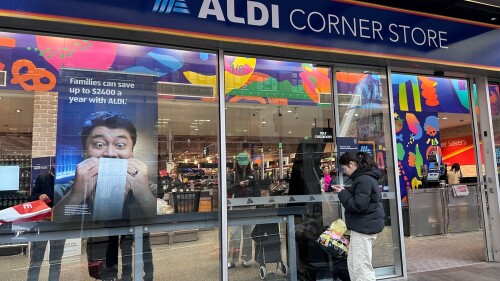Property Types
Hotels and Resorts
Real estate investors recognize the need to incorporate physical climate risks—including wildfire, hurricanes, and excessive heat—into their business models as the prevalence and severity of extreme weather events increase. Climate-risk analytics tools have proliferated in recent years to help investors assess, price, and mitigate these physical climate risks. Investors have welcomed these tools but face challenges selecting the right provider—or providers—to meet their business needs.
It’s tough to view a strong economy as bad news. Yet a firmly positive economic projection in ULI’s Real Estate Economic Forecast does not bode well for commercial real estate participants who are hoping for relief in rate cuts from the U.S. Federal Reserve.
These 10 hotels embody environmental sensitivity plus energy and water efficiency.
Industrial
After a quiet first half of 2024, CMBS originations increased 59 percent in Q3 on a year-over-year basis, according to the Mortgage Bankers Association’s Quarterly Survey.
The outlook for the European real estate market is cautiously optimistic despite growing geopolitical uncertainty and concerns about economic growth, with London, Madrid, and Paris emerging as the standout performers, according to a new report by PwC and the Institute.
Northern Mexico has experienced a significant expansion in the Mexican industrial real estate sector since its major decline from the late 1990s to the early 2000s, due, in part, to low-cost production in China. During the pandemic, that trend began to shift.
Mixed-Use
Following a masterplan adopted by British Land, the AustralianSuper pension fund, and the Southwark Council, developers are now seven years into a 15-year project to transform a 53-acre (21.44 hectares) parcel of industrial land and a former quay into a community that will include as many as 3,000 new homes, office, retail, leisure, and entertainment space.
As aging retail continue to evolve, one increasingly popular trend has been to redesign malls as town centers—recalling a time when such commercial districts were the heart and soul of a community. Mall–to–town center retrofits are emerging throughout the nation, especially in suburban communities, where pedestrian-friendly, mixed-use environments are highly attractive to millennials now raising families.
Many mixed-use projects get the hardware right. They feature a thoughtful mix of uses, beautiful buildings, and name-brand tenants. Far fewer get the “software” right—the pedestrian flow, the plaza experience, the hospitality-level service, and all the subtle details that turn a mixed-use project into something more. These elements transform a development into a vibrant, urbanesque destination—one that delivers on the promise of being a true community gathering place.
Multifamily
As congregations across North America grapple with shrinking membership and aging facilities, a new opportunity is emerging: transforming faith-owned land into affordable housing and community-serving spaces. At the 2025 ULI Fall Meeting in San Francisco, panelists in the session “Spiritual Brownfields: Declining Congregations and Opportunities for Housing on Faith-Owned Land” explored how churches and developers are partnering to bring mission-driven housing to underused sacred sites.
At the 2025 ULI Fall Meeting in San Francisco, leaders from across the development and construction industries discussed how they are adapting to a volatile yet stabilizing housing landscape in a session called “Report from the Field: Wrestling with the Cost of Housing Construction.” Despite headlines about tariffs, labor shortages, and inflation, the panelists agreed that the cost environment has settled into what one called a “new normal.”
A panel of insiders reveals what’s true—and false—about the housing crisis and how to fix it.
Office
ULI San Francisco and the Civic Joy Fund have announced the winners of the Market Street Reimagined competition. This international competition of ideas, which attracted 173 submissions from nine countries, challenged entrants to create a new vision for the city’s main thoroughfare that would draw more visitors and businesses to the area. A distinguished jury, hosted by San Francisco mayor Daniel Lurie, divided the $100,000 prize among the winning teams and designated eight additional entries as honorable mentions.
Deep discounts, favorable financing, and long-term benefits are turning users into owners.
As it contends with the same post-pandemic challenges that confront other urban cores nationwide, downtown Denver is leveraging public/private partnerships to bring back vitality. At the ULI 2025 Spring Meeting in Denver, Colorado, five leaders involved with the city’s revitalization shared recent successes and plans for Denver’s future.
Residental
The city of Baltimore has approximately 13,000 abandoned houses and 20,000 vacant lots that create health, safety, and financial hazards for nearby properties. Although it might seem simple to fix and flip these homes, the math doesn’t easily compute.
A tsunami of emptying houses of worship—up to 100,000, according to one religious source—is washing across America. Developing intelligent reuses and redevelopments for these properties will make the difference between a community flourishing and struggling. Housing advocates view underused faith properties as natural sites to develop projects that help close the great national gap on affordable housing.
ULI Asia Pacific report builds the business case.
Retail
The OAK project began in 2009, when a development firm set their sights on the corner of Northwest Expressway and North Pennsylvania Avenue, the state’s most important and busiest retail intersection. As the region’s only parcel capable of supporting a vertically integrated project of this scale and density, that land represented an opportunity to create something truly special.
Consumers have kept a steady foot on the gas this year. A record-high 197 million consumers shopped in stores or online over the Thanksgiving holiday weekend, according to the National Retail Federation (NRF). The NRF forecasts that holiday sales will grow between 2.5 percent and 3.5 percent, with total retail spending in the United States falling between $979.5 billion and $989 billion during November and December. That forecast also is consistent with NRF’s annual U.S. sales growth—between 2.5 percent and 3.5 percent—for 2024.
The National Retail Federation’s Hot 25 Retailers ranks the nation’s fastest-growing retail companies. Rankings are determined by increases in domestic sales between 2022 and 2023; all retail companies with global sales in excess of $2 billion, and key format leaders were eligible.

